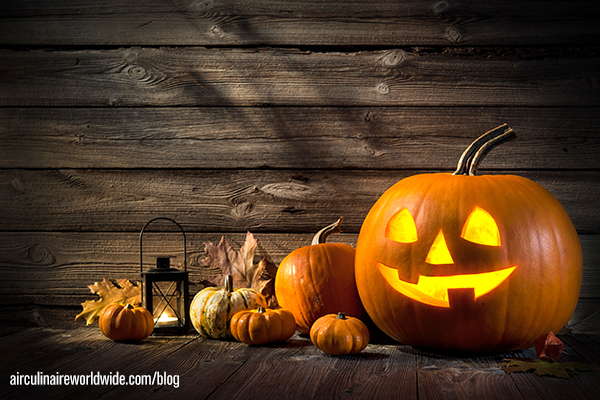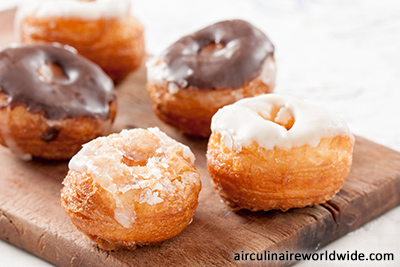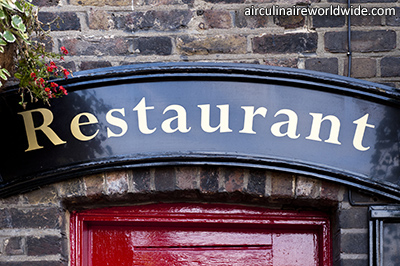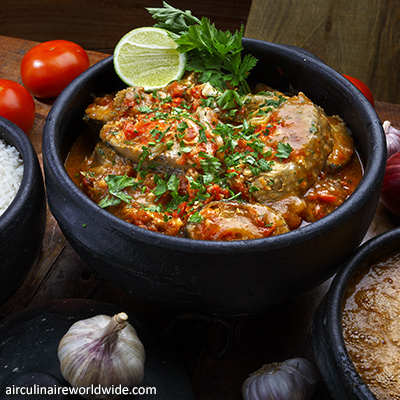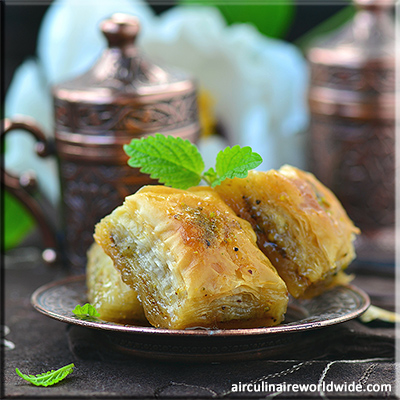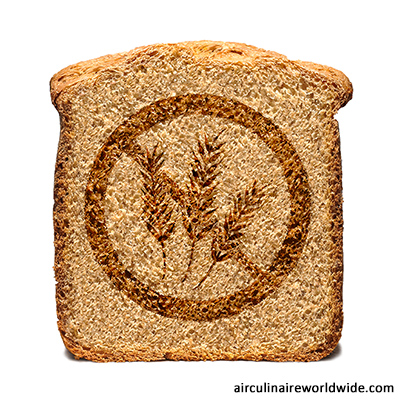To understand the culinary influences of any holiday or event, it is important to first take a look at the history and origins. It is only recently in the 19th century that Halloween has become the popular celebration that it is. Previously to this it was simply the eve of All Saints Day (otherwise known as All Hallows), “hallowed” was the name given to saints or holy people in England meaning “sanctified” or “holy,” or All Souls Day which was a medieval custom where people prayed for the dead on this day. Hallowe`en or All Hallows Eve is traditionally celebrated Oct. 31 which is the day before All Saints Day or the major festival of All Hallows Day.
“Trick or Treat” is thought to originate from the history of spirits playing tricks on the living, masks and costumes were worn by the living if they left their homes after dark on Hallowe`en to hide from the spirits, scare them away or prevent recognition. People would also leave bowls of food outside their homes to appease the spirits and prevent them from entering. Hence the practice of modern day where people dress up performing “tricks” if not placated with “treats.”
The carved pumpkin has a couple of possible origins. One popular theory refers to an Irish legend “Irish Jack.” (It was the Irish immigrants that prompted the popularisation of Hallowe`en in America.) In the story, Jack placed a coal inside a turnip, using it to light his way as he roams earth. In the 1800s in North America, turnips were replaced by pumpkins which were more plentiful and easier to hollow out and carve! So, this year when carving out your pumpkin, spare a thought for Irish Jack.
When scooping out the string flesh and seeds of your pumpkin, remember to reserve the seeds, rinse them and roast them off in the oven for use in salads and other recipes. The most obvious use of the pumpkin flesh is for pumpkin soup, but watch this space Thursday a for Pumpkin & Rosemary Risotto recipe to try.
Questions?
If you have any questions about this article, contact Vivienne Yeoman at vivienneyeoman@talktalk.net.
| This is an article by guest author Vivienne Yeoman, a catering industry expert based in London, England. Vivienne has over 30 years of experience in the catering industry as an Operational Manager. Any thoughts expressed in this article are entirely Vivienne’s and do not necessarily reflect the views of Air Culinaire Worldwide. |
If you would like to be considered for becoming a guest author, please contact socialmedia@airculinaire.com.
